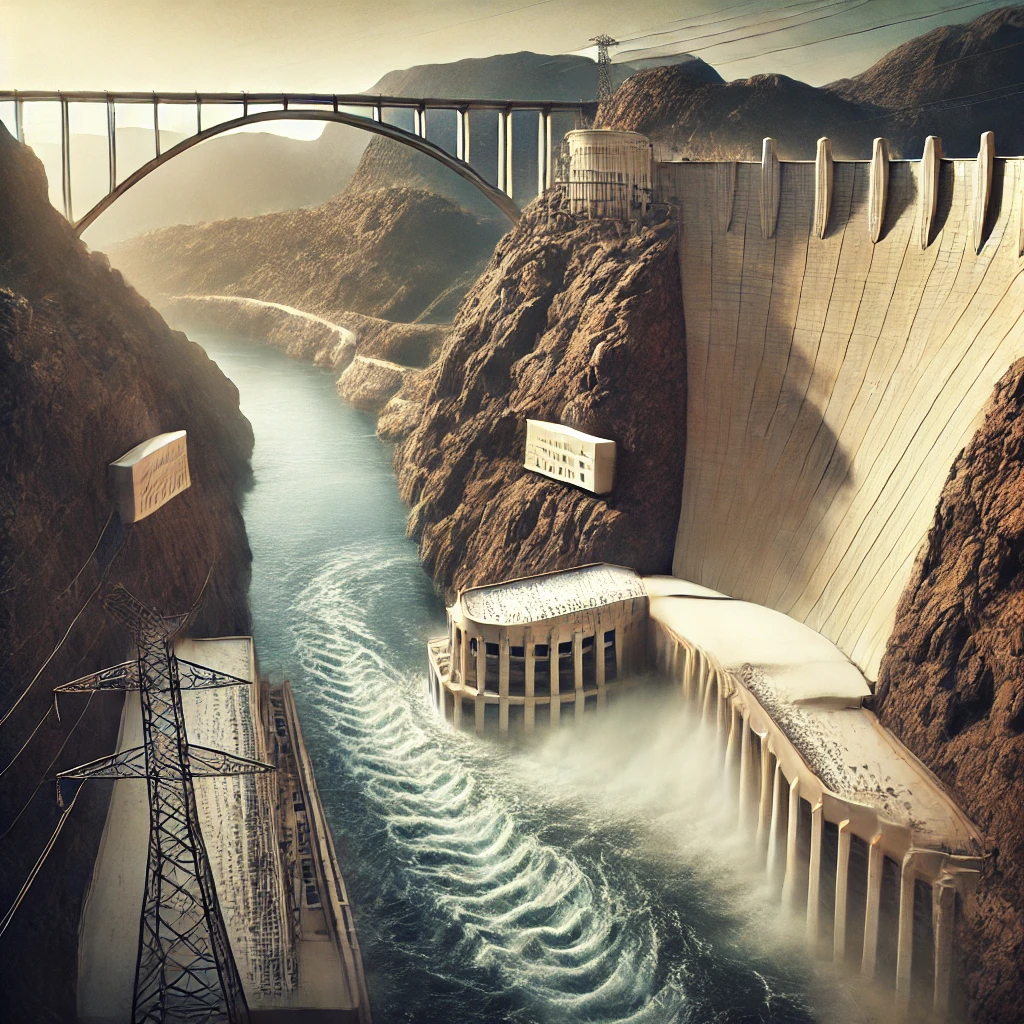On October 9, 1936, the Boulder Dam, later renamed the Hoover Dam, officially began generating electricity, marking a significant milestone in the development of hydroelectric power in the United States. Located on the border between Arizona and Nevada, the Hoover Dam not only transformed the region’s landscape but also played a crucial role in the economic and social development of the American Southwest, particularly benefiting areas such as Los Angeles.

The Vision Behind the Hoover Dam
The Hoover Dam was conceived during a time of great economic hardship in the United States, particularly during the Great Depression. As the nation struggled with unemployment and economic instability, the federal government sought to undertake ambitious infrastructure projects that would create jobs and stimulate growth. The dam was part of a larger effort to harness the power of the Colorado River for flood control, irrigation, and hydroelectric power generation.
Designed by engineer Frank Crowe and constructed by thousands of workers, the Hoover Dam was a monumental feat of engineering. Completed in 1936, it stood as one of the largest concrete structures of its time, showcasing the capabilities of modern engineering. The dam’s construction provided employment for thousands during a critical period and exemplified the government’s commitment to revitalizing the economy.

The Celebration of Power
When the Hoover Dam began generating electricity on October 9, 1936, it was a cause for celebration, particularly in Los Angeles, which benefited from the newfound power supply. The city organized a grand parade to commemorate the occasion, reflecting the excitement and optimism surrounding this engineering marvel. The event drew attention to the transformative potential of the dam, as it promised to provide a reliable source of energy to support the growing population and economy of Southern California. The electricity generated by the Hoover Dam had far-reaching effects, powering homes, industries, and public infrastructure across the region. It facilitated the expansion of Los Angeles and other nearby cities, enabling rapid growth and development. The dam’s role in providing hydroelectric power positioned it as a key player in the modernization of the American Southwest.
A Lasting Impact on the Region
The Hoover Dam not only transformed the energy landscape of the Southwest but also had significant environmental and social impacts. While it provided much-needed water and power to arid regions, it also altered the natural flow of the Colorado River, raising concerns about ecological changes and the rights of local communities. The dam’s construction displaced several Indigenous communities and affected their access to traditional lands and resources.

Over the years, the Hoover Dam has become an iconic symbol of American ingenuity and resilience. It continues to be a vital source of electricity, providing power to millions of residents in the Southwest. The dam’s infrastructure has also evolved to include recreational opportunities, attracting tourists from around the world to witness its grandeur and learn about its history.
Preserving the Legacy
Today, the Hoover Dam stands as a testament to the power of collaboration and innovation. It serves not only as a functional piece of infrastructure but also as a historical landmark that reflects the challenges and triumphs of the past. Its construction is often cited as a defining moment in American history, symbolizing the nation’s ability to overcome adversity through determination and engineering prowess. The legacy of the Hoover Dam continues to influence discussions about sustainable energy and resource management in the 21st century. As the world grapples with climate change and the need for renewable energy sources, the dam’s role as a hydroelectric power generator offers valuable insights into the potential of harnessing natural resources responsibly.
